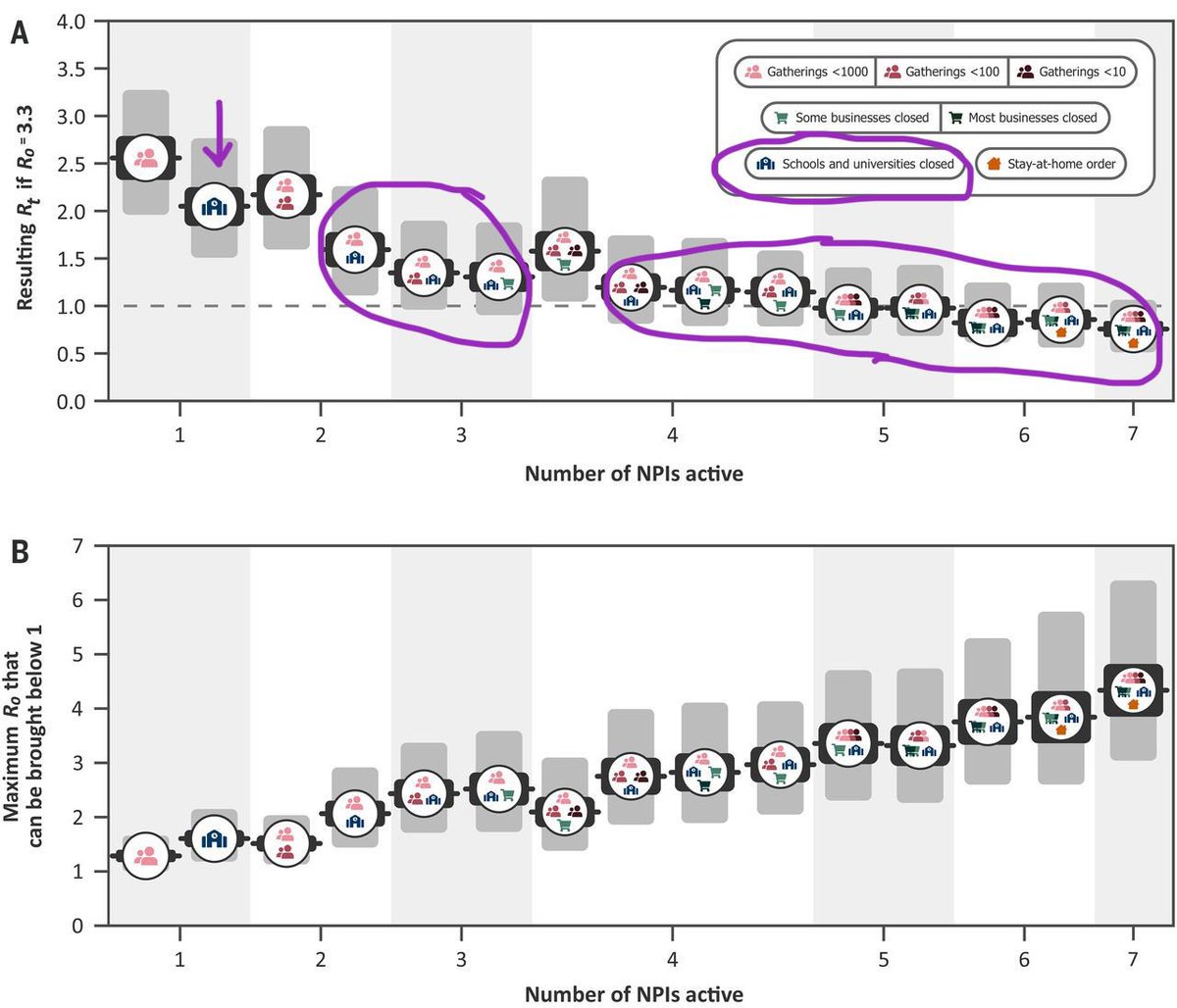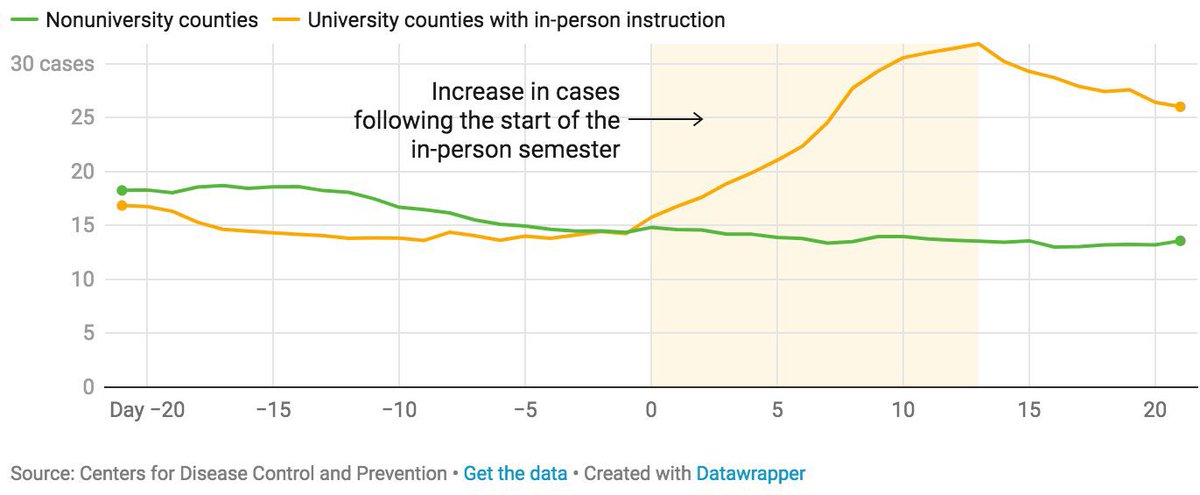MOST EFFECTIVE INTERVENTIONS: What works best for reducing R(t)?
 Limiting gatherings <10 people: 42% reduction
Limiting gatherings <10 people: 42% reduction
 Closing schools & universities: 38% reduction—which was “remarkably robust“
Closing schools & universities: 38% reduction—which was “remarkably robust“
 big paper published in @ScienceMagazine—Legit.
big paper published in @ScienceMagazine—Legit.
#COVID19
https://science.sciencemag.org/content/early/2020/12/15/science.abd9338.full
 Limiting gatherings <10 people: 42% reduction
Limiting gatherings <10 people: 42% reduction Closing schools & universities: 38% reduction—which was “remarkably robust“
Closing schools & universities: 38% reduction—which was “remarkably robust“ big paper published in @ScienceMagazine—Legit.
big paper published in @ScienceMagazine—Legit.#COVID19

https://science.sciencemag.org/content/early/2020/12/15/science.abd9338.full
2) Notice how big a drop school closing offer in dropping R below 3.3 baseline. And especially when combined with other things, schools can bring it down below R<1. #COVID19
@dgurdasani1 has more children’s data - follow here.
@dgurdasani1 has more children’s data - follow here.
3) here are the specific details of each govt intervention’s R reduction and their 95% CIs from@the study.
4) As Professor Greenhalgh points out, if schools open; they should definitely reconsider the meager 2 meter rule. It doesn’t work for an airborne aerosol virus. Not only masks, but ventilation— and HEPA Filters key if no ventilation. https://twitter.com/trishgreenhalgh/status/1347545904241381379
5) Here is the latest data on attack rates of the new B117  variant vs common #SARSCoV2 types. And notice the detail about kids aged 0-9.... see details within full thread
variant vs common #SARSCoV2 types. And notice the detail about kids aged 0-9.... see details within full thread  below. https://twitter.com/drericding/status/1347745261670584321
below. https://twitter.com/drericding/status/1347745261670584321
 variant vs common #SARSCoV2 types. And notice the detail about kids aged 0-9.... see details within full thread
variant vs common #SARSCoV2 types. And notice the detail about kids aged 0-9.... see details within full thread  below. https://twitter.com/drericding/status/1347745261670584321
below. https://twitter.com/drericding/status/1347745261670584321
6) However, Denmark CDC is worried that merely crushing the R slightly below 1 is not enough since they anticipate the new B117 variant will require us fast action to crush the R<0.7 in order to contain it by Feb/March. https://twitter.com/drericding/status/1346899021621813249
7) UK govt’s SAGE report of children’s transmission: https://twitter.com/drericding/status/1345858404263321600
8) Here is the latest data on university openings and #COVID19 incidence compared to remote instruction counties. https://twitter.com/drericding/status/1353112560409698306

 Read on Twitter
Read on Twitter





